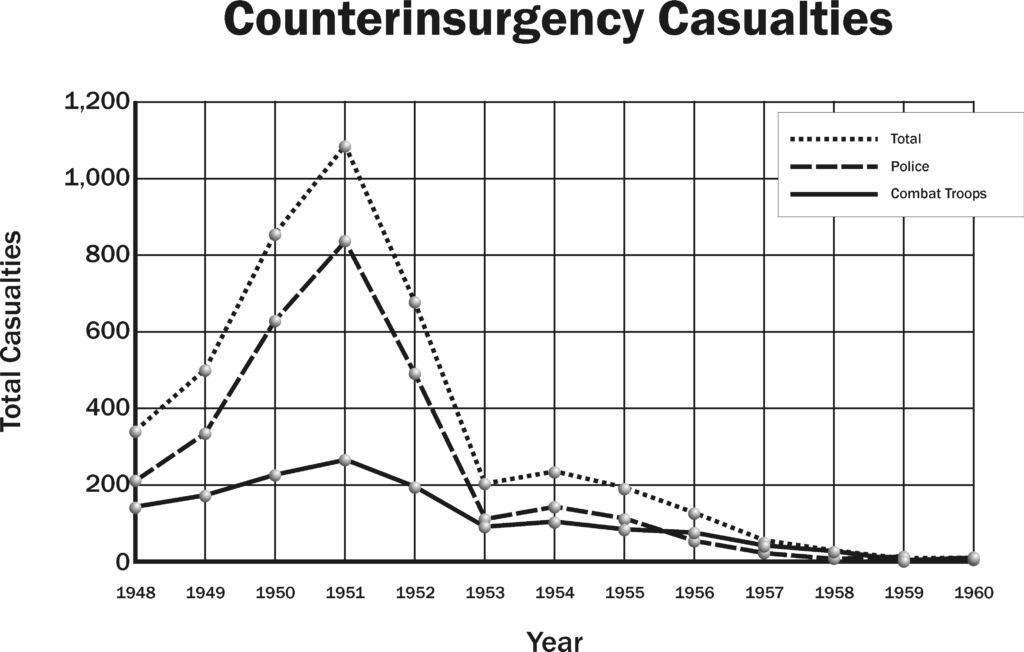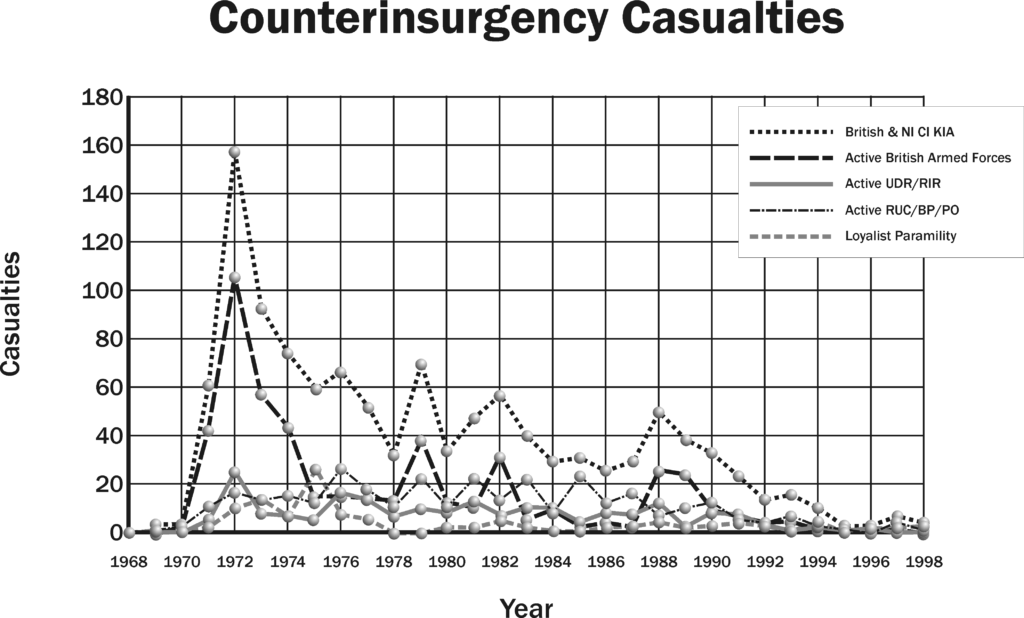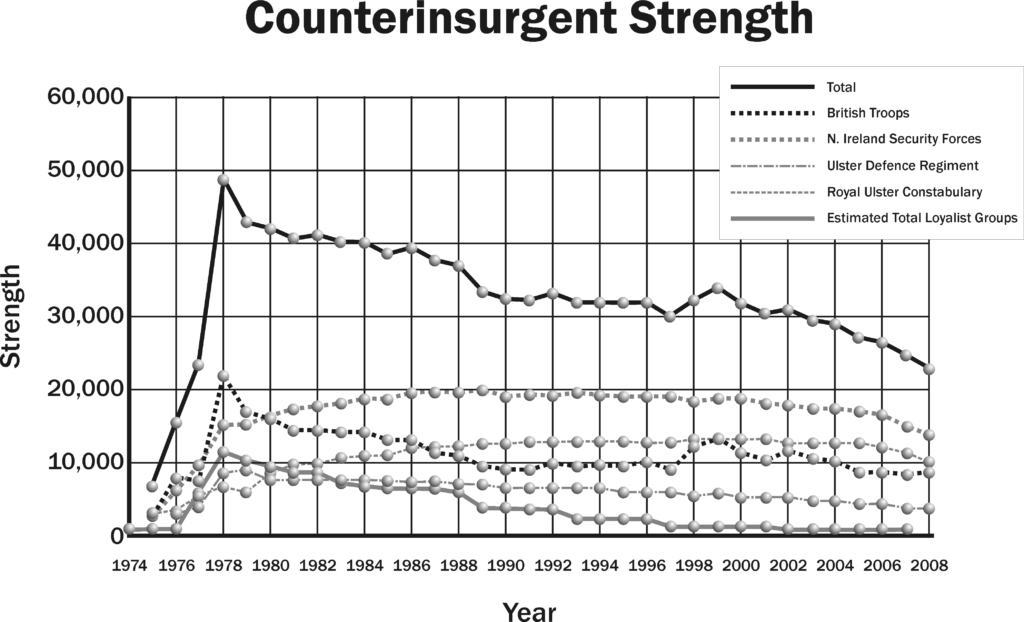I do discuss force draw downs in my book America’s Modern Wars: Understanding Iraq, Afghanistan and Vietnam. It is in Chapter 19 called “Withdrawal and War Termination” (pages 237-242). To quote from parts of that chapter:
The missing piece of analysis in both our work and in that of many of the various counterinsurgent theorists is how does one terminate or end these wars, and what is the best way to do so? This is not an insignificant point. We did propose doing exactly such a study in several of our reports, briefings and conversations, but no one expressed a strong interest in examining war termination…..
In our initial look at 28 cases, we found only three cases where the counterinsurgents were able to reduce or choose to significantly reduce force strength during the course of an insurgency. These are Malaya, Northern Ireland and Vietnam. With our expanded database of 83 cases, these are still the only three cases of such.
Let us look at each in turn. The case of Malaya is illustrated below:
 The most intense phase of the insurgency was from 1958 to 1952. Peak counterinsurgent deaths were 488 in 1951, with 272 in 1952 and only 95 in 1953. Over the course of 1959 and 1960, there were only three deaths.
The most intense phase of the insurgency was from 1958 to 1952. Peak counterinsurgent deaths were 488 in 1951, with 272 in 1952 and only 95 in 1953. Over the course of 1959 and 1960, there were only three deaths.
 When one looks at counterinsurgent force strength over that period, one notes a large decline in strength, but in fact, it is a decline in militia strength. Commonwealth troop strength peaked at 29,656 in 1956, consisting of UK troops, Gurkhas and Australians. It declined to 16,939 in 1960. Basically, even with no combat occurring for two years, the troop strength of the intervening forces (“UK Combat Troops” on the first graph) was reduced by one half and only during last couple of years. The decline is Malayan strength is primarily due to police force declining after 1953 and the “Special Constabulary” declining after 1952 and eventually being reduced to zero. There was also a Malayan Home Guard that was briefly up to 300,000 people, but most of them were never armed and were eventually disbanded.
When one looks at counterinsurgent force strength over that period, one notes a large decline in strength, but in fact, it is a decline in militia strength. Commonwealth troop strength peaked at 29,656 in 1956, consisting of UK troops, Gurkhas and Australians. It declined to 16,939 in 1960. Basically, even with no combat occurring for two years, the troop strength of the intervening forces (“UK Combat Troops” on the first graph) was reduced by one half and only during last couple of years. The decline is Malayan strength is primarily due to police force declining after 1953 and the “Special Constabulary” declining after 1952 and eventually being reduced to zero. There was also a Malayan Home Guard that was briefly up to 300,000 people, but most of them were never armed and were eventually disbanded.
This is the best case we have of a force draw down, and it was only done to any significance late in the war, where the insurgency was pretty much reduced to 400 or so fighters sitting across the narrow border with Thailand and scattered remnants being policed inside of Malaya.
Northern Ireland is another case in which the degree of activity was very intense early on. For example:
 On the other hand, force strength does not draw down much.
On the other hand, force strength does not draw down much.
 In this case the peak counterinsurgent strength was 48,341 in 1972, and the counterinsurgent strength is still 22,691 in 2002. These two cases show the limitation of a draw down.
In this case the peak counterinsurgent strength was 48,341 in 1972, and the counterinsurgent strength is still 22,691 in 2002. These two cases show the limitation of a draw down.
In the case of Vietnam, there was a four-year-long massive build up, and then four years of equally hasty withdrawal. This is clearly not the way to conduct a war and is discussed in more depth in Chapter Twenty-Two. Vietnam is clearly is not a good example of a successful force drawn down.
 Besides these three cases, we do not have any other good examples of a force draw down except that which occurs in the last year of the war, and agreements are reached and the war ended. In general, this strongly indicates that draw downs are not very practical until you have resolved the war.
Besides these three cases, we do not have any other good examples of a force draw down except that which occurs in the last year of the war, and agreements are reached and the war ended. In general, this strongly indicates that draw downs are not very practical until you have resolved the war.
A basic examination needs to be done concerning how insurgencies end, how withdrawals are conducted, and what the impact of various approaches towards war termination is. This also needs to address long-term outcome, that is, what happened following war termination.
We have nothing particularly unique and insightful to offer in this regard. Therefore, we will avoid the tendency to pontificate generally and leave this discussion for later. Still, we are currently observing with Afghanistan and Iraq two wars where the intervening power is withdrawing or has withdrawn. These are both interesting cases of war termination strategies, although it we do not yet know the outcome in either case.
The bolding was added for this post.
